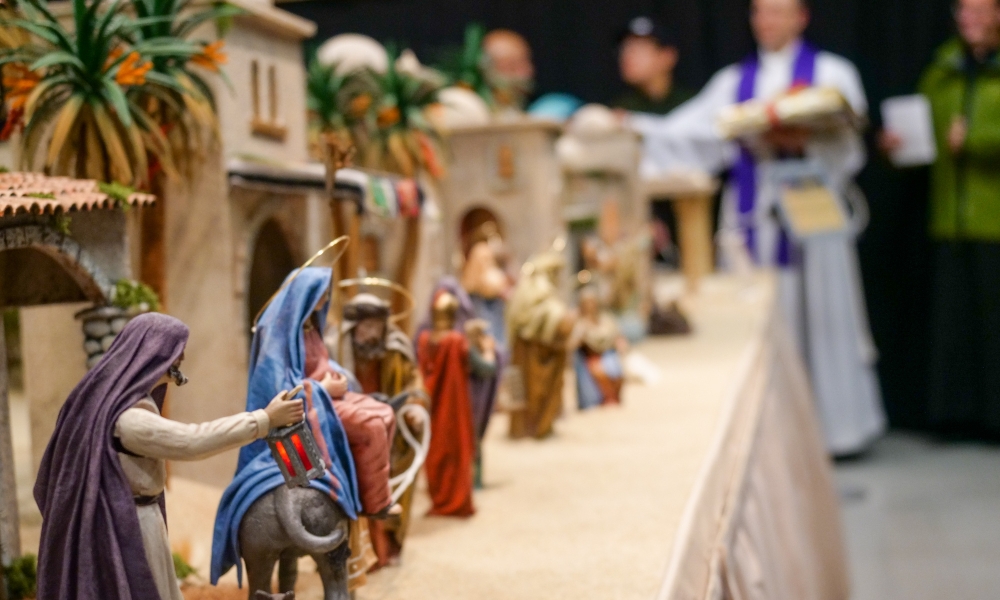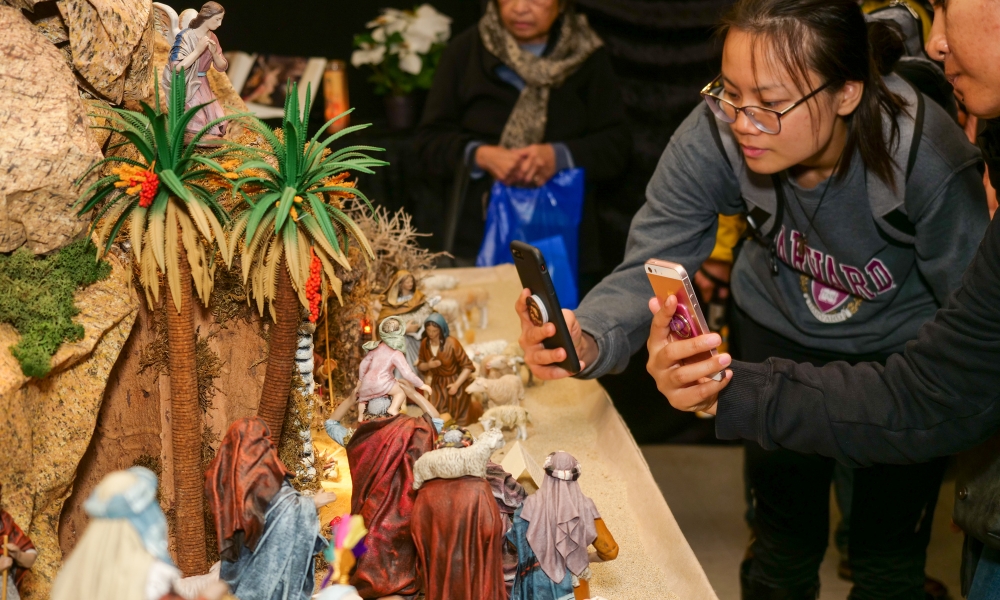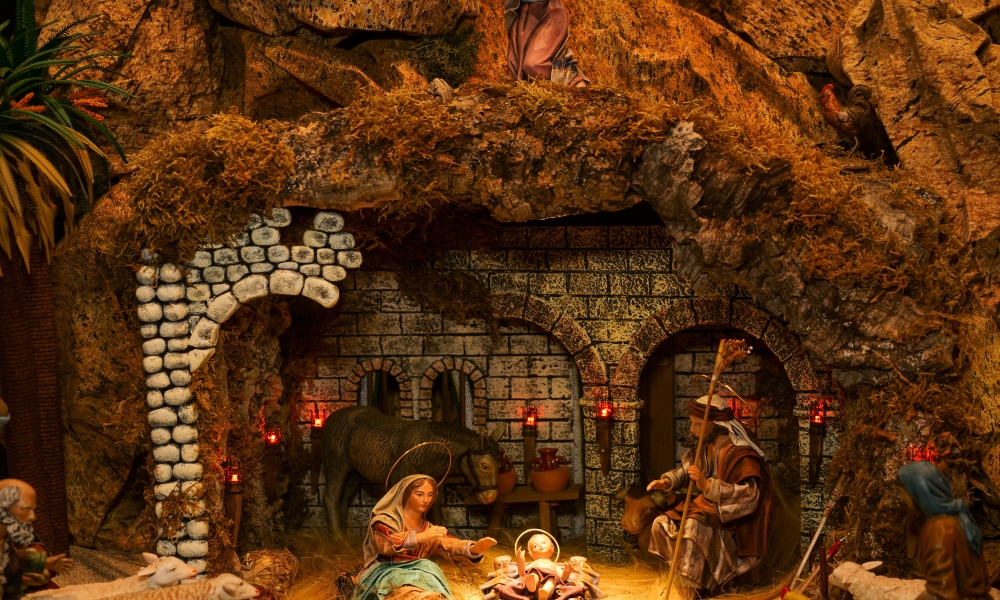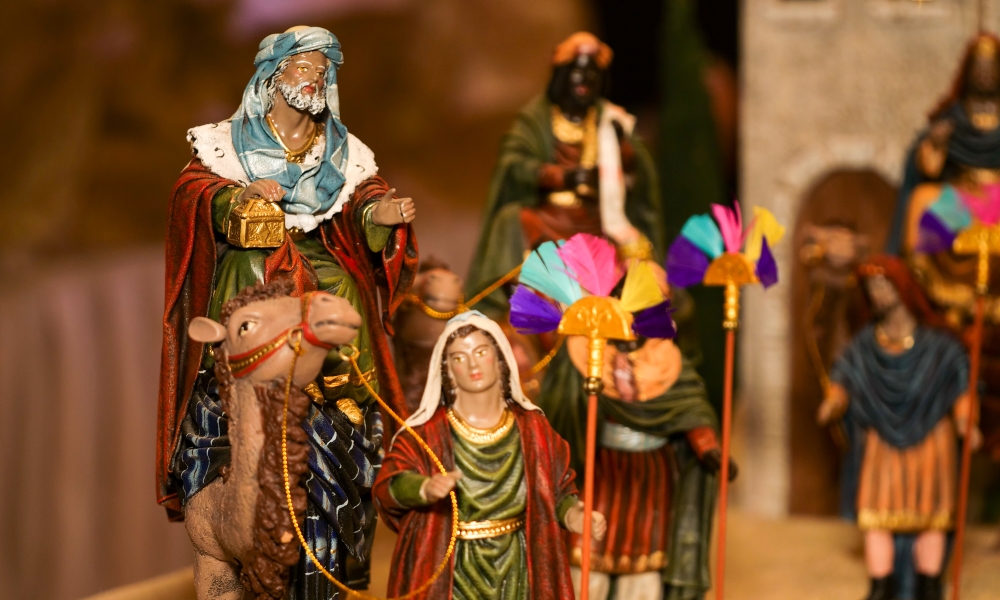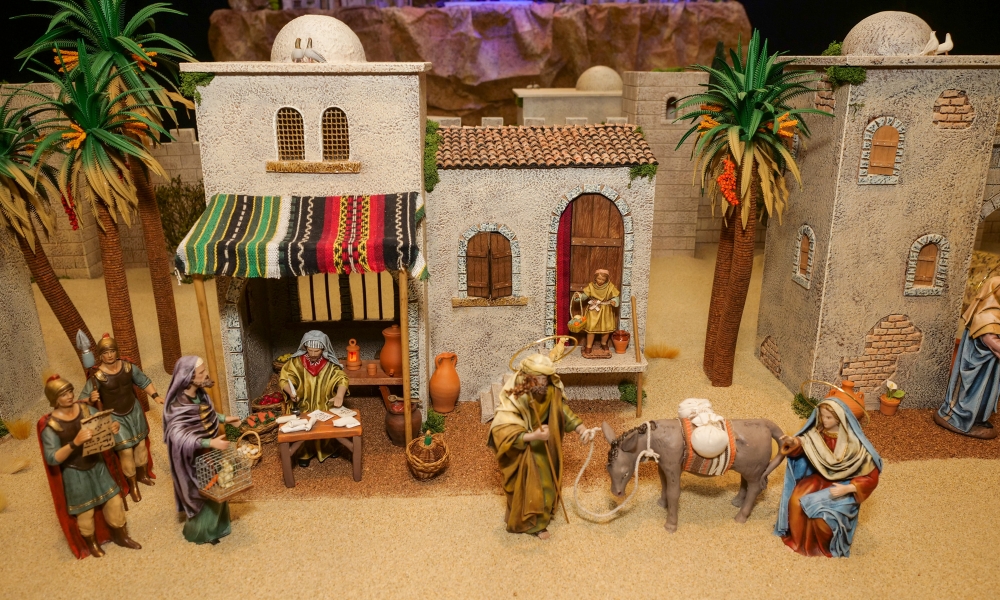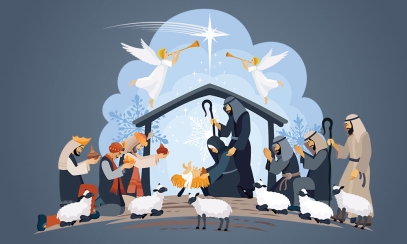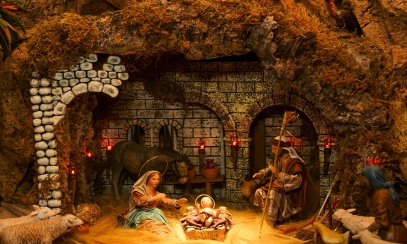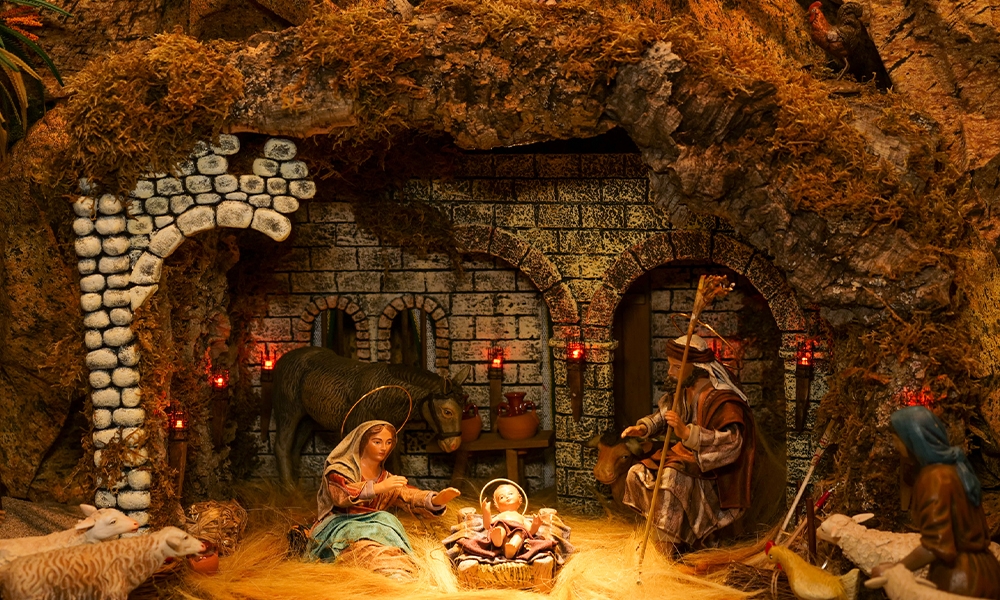
The Nativity Starts at Home: Benito Santivañez’s Unexpected Role as Nativity Diorama Builder English
Before Benito Santivañez began seasonally overseeing the setup of dozens of miniatures for the Nativity diorama at Our Lady of Peace (OLOP) in Santa Clara, which he has done for the last six years, he would set up his family nativity with his mother. It was only later in life that he received an unexpected, personal invitation from God to continue the practice publicly. “Never, ever, never, in my wildest dreams, would I ever have thought I would be involved in building these Nativity dioramas,” Benito shared in his phone call, nor would he ever have guessed that this childhood ritual would take him all the way to Seville, Spain, to attend an international congress for Belenistas, or nativity scene makers.
Before Benito Santivañez began seasonally overseeing the setup of dozens of miniatures for the Nativity diorama at Our Lady of Peace (OLOP) in Santa Clara, which he has done for the last six years, he would set up his family nativity with his mother. It was only later in life that he received an unexpected, personal invitation from God to continue the practice publicly. “Never, ever, never, in my wildest dreams, would I ever have thought I would be involved in building these Nativity dioramas,” Benito shared in his phone call, nor would he ever have guessed that this childhood ritual would take him all the way to Seville, Spain, to attend an international congress for Belenistas, or nativity scene makers.
All the way to Spain
Put on by the International Federation of Nativity Scenes, Francisus, the title of this year’s congress, commemorated the 800th anniversary of the first creche made by St. Francis of Assisi in a little cave in Greccio, Italy. What Benito witnessed while in Europe confirmed his belief in the importance of these diorama displays for Catholics and all people of faith, “I see that the Nativity scene will always be part of the Catholic Churches globally and locally because it is the real meaning of Christmas.” He also spoke about why this work is important to him personally, commenting, “I think it is important to preserve this annual tradition so that everyone can enjoy it and feel it is part of their Christmas tradition.”
Nativity dioramas: a whole city effort
At the conference, Benito learned that in Europe, whole cities have Nativity scene clubs that spend an entire year constructing life-sized dioramas, “For example, Madrid, Sevilla, and Barcelona: their clubs start building detailed buildings, with little exterior little lights, little pots and pans, trees and some of the dioramas have real water running as a little creek or fountain.”
One of the few Americans to participate in the international conference, he laughed when he recalled how the European artisans reacted when they discovered his nationality, “A gentleman said to us, “Americans, pay close attention to this diorama because St. Joseph looks like the Hollywood actor, Charlton Heston, Mary is the likeness Ava Gardner, and the Egyptian figurine looks like Yul Brynner.” But apart from this playful reference to the Hollywood film The Ten Commandments, Benito was one of equals amongst a handful of 550 international nativity makers in attendance. All were treated to the various creative ways that the nativity clubs and Spanish and Italian artists craft their dioramas to be truly sensory experiences.
One display took up a whole room. He recalled, “When we walked in, they turned off the lights and lit up each scene as we progressed in the story, and each part had a narrative to accompany it.” He shared his joy at meeting others from all over the world who all did the same thing. Benito recalled, “We all share the same hobby, passion, and appreciation for what the Nativity scene means.” It is that enthusiasm that he brings into his work here at home.
“I think it is important to preserve this annual tradition so that everyone can enjoy it and feel it is part of their Christmas tradition.” ~ Benito Santivañez
Creating the Nativity at home
Every year, Santivañez unboxes thousands of figurines and dwellings, from angels to bread loaves, so visitors can immerse themselves in the Joyful Mysteries of the Rosary, whose centerpiece is Christ’s Nativity. He admits that he is always thinking about further ways to bring the diorama to life and that visitors’ reactions keep him dedicated. “I think the one thing that inspires me is when I see people enjoying the nativity scenes saying things like, ‘Look at that! No, look at that!’” The power of the Christmas nativity has no less impacted him, “I think it has made me closer to the church and my faith as a Catholic.”
Father Brian Dinkle, pastor of Our Lady of Peace, also feels that the popular Nativity diorama is spiritually nourishing to the community, and he has witnessed the diorama's transformative effect on people. He shared, “Without question, our crèche experience has been transformative in the lives of the parishioners. For the children: it puts the mysteries surrounding the birth of Christ at eye level with them. The children pay attention to the details and are fascinated to see what things may have looked like. The adults are allowed to be childlike.” Father Brian also expressed his appreciation for Benito's care in constructing the display: "I have come to a deeper appreciation of making something so magnificent. I have also been impacted by Benito’s dedication and love for this work. It is truly a labor of love for him.”
The real meaning of Christmas
On a practical level, the European conference also reinforced how many of the carefully crafted figurines, both locally and globally, originate in Spain. The history of the Our Lady of Peace diorama is one where, in 2014, former pastor Fr. José Nieto purchased the original figurines during a trip to Spain. In the diocese, it is the only display of its size open to the public. But even if visitors cannot attend in person, Benito encourages them to set up creches with their children, where it all started for him. “I remember that at my house, the Nativity Scene was the focal point of Christmas. I would always look forward to seeing the true meaning of Christmas!” MN
Benito Santivañez

